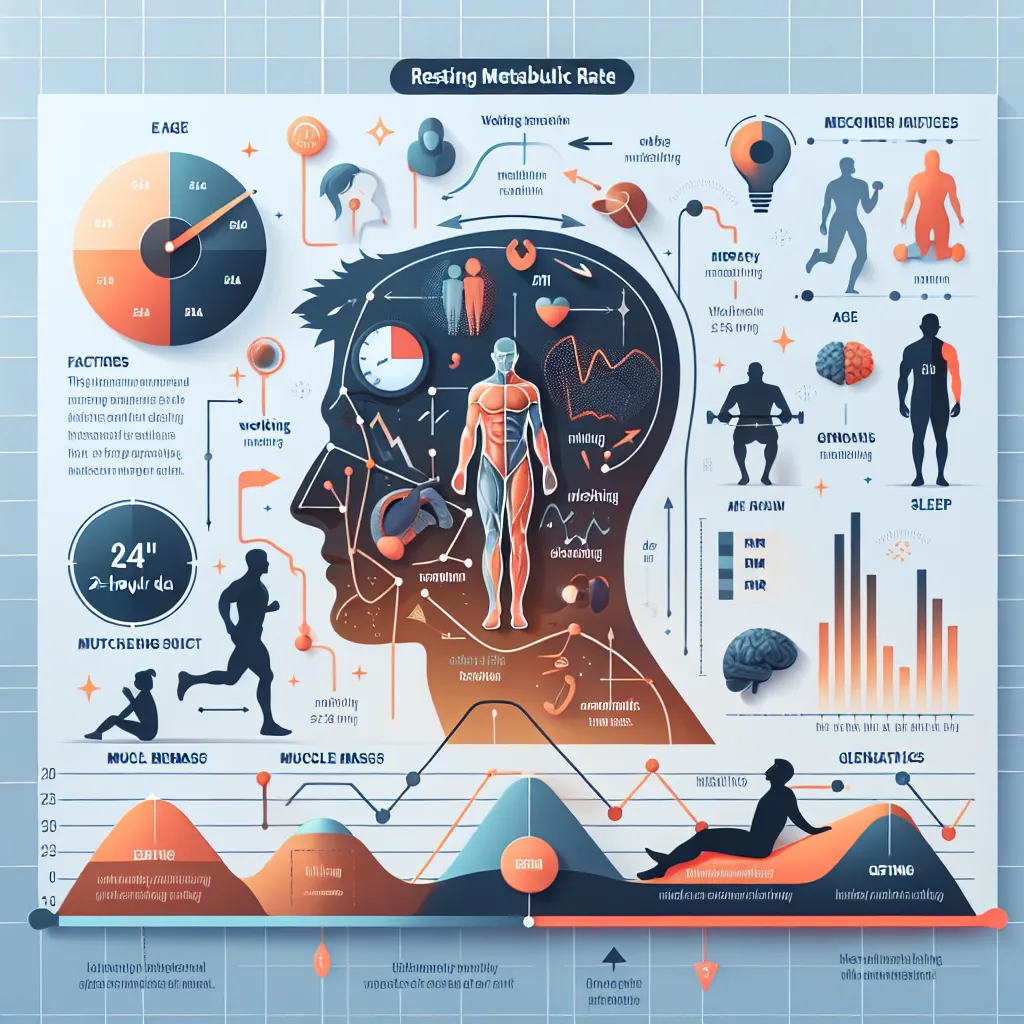Resting Metabolic Rate (RMR) is a crucial concept in health and fitness that often appears in IELTS exams. Let’s explore this term in depth to enhance your vocabulary and boost your IELTS performance.
Nội dung bài viết
- Understanding the Context of ‘Resting Metabolic Rate’
- Real-Life Examples
- Common Contexts
- Frequency in IELTS
- Analyzing ‘Resting Metabolic Rate’
- Word Structure
- Synonyms and Antonyms
- Memorization Techniques
- Mind Mapping
- Storytelling Technique
- Practical Exercises
- Application in IELTS
- Repetition and Review
- Conclusion
Definition: Resting Metabolic Rate (RMR) is the number of calories your body burns while at rest to maintain basic life functions.
Part of Speech: Noun phrase
Pronunciation: /ˈrestɪŋ mɛtəˈbɒlɪk reɪt/
Understanding the Context of ‘Resting Metabolic Rate’
Real-Life Examples
-
Scientists measured John’s resting metabolic rate to determine his baseline calorie needs.
Analysis: This sentence demonstrates the use of RMR in a scientific context, showing how it’s used to assess an individual’s energy requirements. -
A higher resting metabolic rate often correlates with increased muscle mass.
Analysis: Here, RMR is linked to body composition, highlighting its relevance in fitness and nutrition discussions. -
The nutritionist explained that factors like age and genetics can affect one’s resting metabolic rate.
Analysis: This example illustrates the complexity of RMR, showing that it’s influenced by various factors. -
To lose weight effectively, Sarah focused on increasing her resting metabolic rate through strength training.
Analysis: This sentence showcases the practical application of understanding RMR in weight management strategies. -
The fitness app calculated Tom’s daily calorie needs based on his resting metabolic rate and activity level.
Analysis: This example demonstrates how RMR is used in modern health technology to personalize nutrition plans.
Common Contexts
RMR frequently appears in discussions about:
- Nutrition and dietetics
- Fitness and exercise science
- Weight management
- Health and wellness
- Medical research
Frequency in IELTS
RMR is most likely to appear in:
- Reading passages on health and fitness (high frequency)
- Listening sections discussing nutrition or medical topics (moderate frequency)
- Writing Task 2 essays on health trends or obesity (moderate frequency)
- Speaking Part 3 when discussing health-related issues (low to moderate frequency)

Analyzing ‘Resting Metabolic Rate’
Word Structure
- Resting: Present participle of ‘rest’
- Metabolic: Adjective form of ‘metabolism’
- Rate: Noun indicating a measured quantity
Synonyms and Antonyms
Synonyms:
- Basal metabolic rate (BMR)
- Resting energy expenditure (REE)
- Idle calorie burn
Antonyms:
- Active metabolic rate
- Exercise-induced calorie burn
- Dynamic energy expenditure
Memorization Techniques
Mind Mapping
Create a mind map with ‘Resting Metabolic Rate’ at the center, branching out to related concepts:
- Factors affecting RMR (age, gender, muscle mass)
- Methods of measurement (indirect calorimetry, predictive equations)
- Applications (weight management, nutritional planning)
- Related terms (BMR, REE, metabolism)
Storytelling Technique
Imagine a person named Ray (R for Resting) who’s always burning energy even when sleeping. Ray’s Metabolism Rate is constantly at work, keeping his body functioning. This personification can help you remember the concept of RMR more easily.
Practical Exercises
Application in IELTS
-
Writing Task 2 Sample Question:
“Some people believe that maintaining a healthy weight is solely about diet, while others argue that exercise is more important. Discuss both views and give your opinion.”In your response, you could incorporate RMR:
“While diet plays a crucial role in weight management, exercise is equally important as it can increase one’s resting metabolic rate, leading to more efficient calorie burning even when not actively working out.” -
Speaking Part 3 Practice:
Question: “How do you think people’s understanding of health and fitness has changed in recent years?”Possible answer incorporating RMR:
“In recent years, there’s been a growing awareness of concepts like resting metabolic rate. People now understand that maintaining a healthy weight isn’t just about counting calories, but also about how efficiently their body burns energy even at rest. This has led to more personalized approaches to fitness and nutrition.”
Repetition and Review
To solidify your understanding of RMR:
- Use the term in conversations about health and fitness
- Write a short paragraph about RMR daily for a week
- Create flashcards with RMR and related terms
- Explain the concept to a friend or family member
Conclusion
Understanding ‘Resting Metabolic Rate’ is valuable not only for IELTS success but also for your personal health knowledge. By grasping this concept, you’re equipped to discuss complex health topics with confidence in various sections of the IELTS exam.
Remember to practice using this term in context regularly. Try incorporating it into your daily conversations or writing exercises. How might understanding RMR change your approach to health and fitness? Share your thoughts and experiences in the comments below!